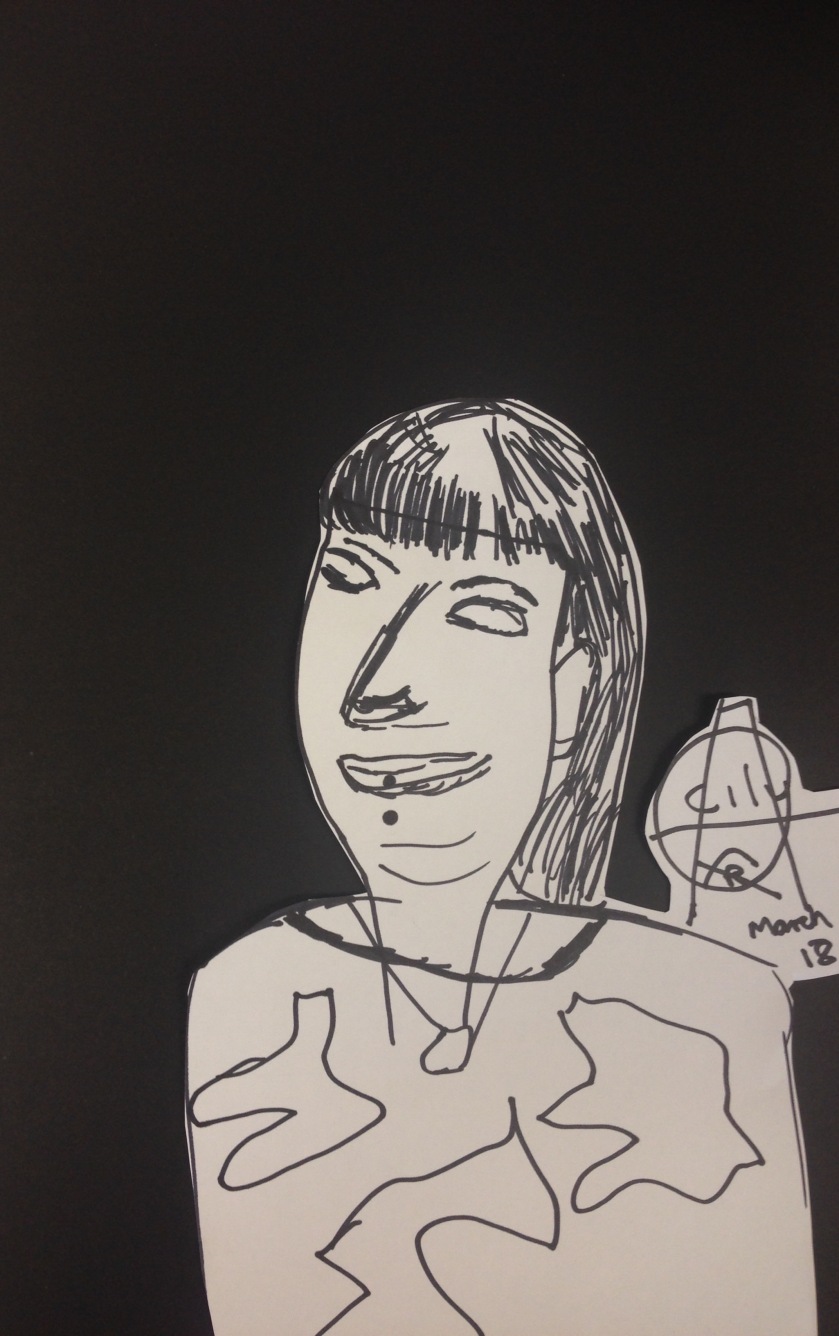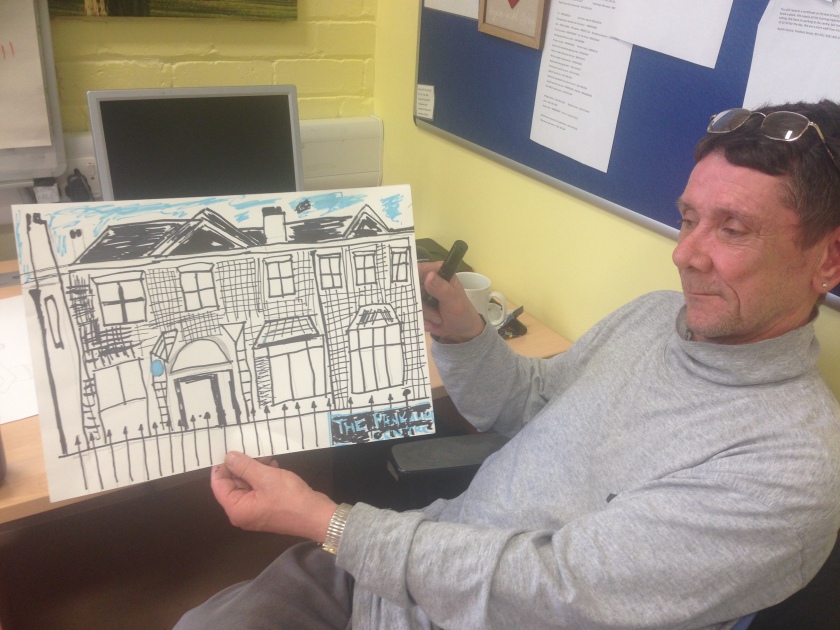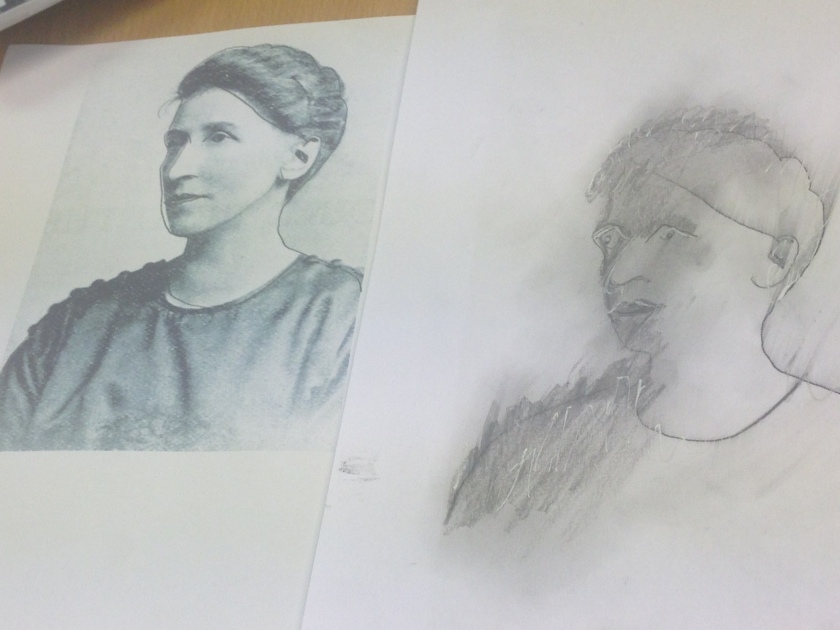2 o’clock break time, our brews made by the familiar face of a man who I’ve never seen sat down, always helpful, cheerful and friendly. It turned out that he could have died yesterday- he’s got a problem with his heart, it’s a mystery to the medical profession. He’s getting further tests done, but at the moment, everyones in the dark. His turn of phrase is mater of fact, he’s one of life’s survivors, does things himself, gets on with it. 3 years ago he was homeless, living on the streets. An alcoholic with no money for drink, and with no intention to beg. His solution? locked in a garage, on his own, no food, no drink, he dried himself out for three days. He crawled out looking for water. These are not the usual things you hear about when someone is fixing you a cup of tea. But then The Booth Centre isn’t usual. It’s a quite extraordinary place, a place where you always have another chance, you can recuperate, see yourself differently and the arts play a big part in it.

I’m working on the project Panorama, with singer songwriter Matt Hill/The Quiet Loner. It’s week 3 of our workshops at The Booth. We’ve got lots to do before our performance in June at The People’s History Museum, but todays session reassured me that we could do it. We’re beginning to refine our theme- there is so much to inspire us at The People’s History Museum, but something that everyone in our group related to was the theme of struggle.
‘Everyone who comes here finds something a struggle, from the past, present or the future.’ Gary.‘Struggle, that’s about it- last week I didn’t turn up for the trip- no roof over my head, I’ve got one now…but it’s still a struggle. I’ve had it nice a few times, but that neck of oil (alcohol) will be the death of me’ Johno.

Johno’s drawing of Lois
Matt worked on a song with the group, I did some drawing with everyone- some examples here. We laughed as we drew, it was more like a game at times, playful but very productive. We used techniques I acquired at art school, blind drawing, keeping your pen on the paper… I joined in, I loved it, the results are wonderful. Next time we start collaging them together into a crowd scene for our panorama.

Johno’s drawing of Bella
Some beautiful lyrics appeared. Gary wrote about silent voices, ‘Silent voices in my head all the time…’ the chorus was sung loud ‘This is life’.
Thanks to everyone who is supporting this project, and all who are joining in our workshops with honesty, openness and a sense humour.
Lois Blackburn










